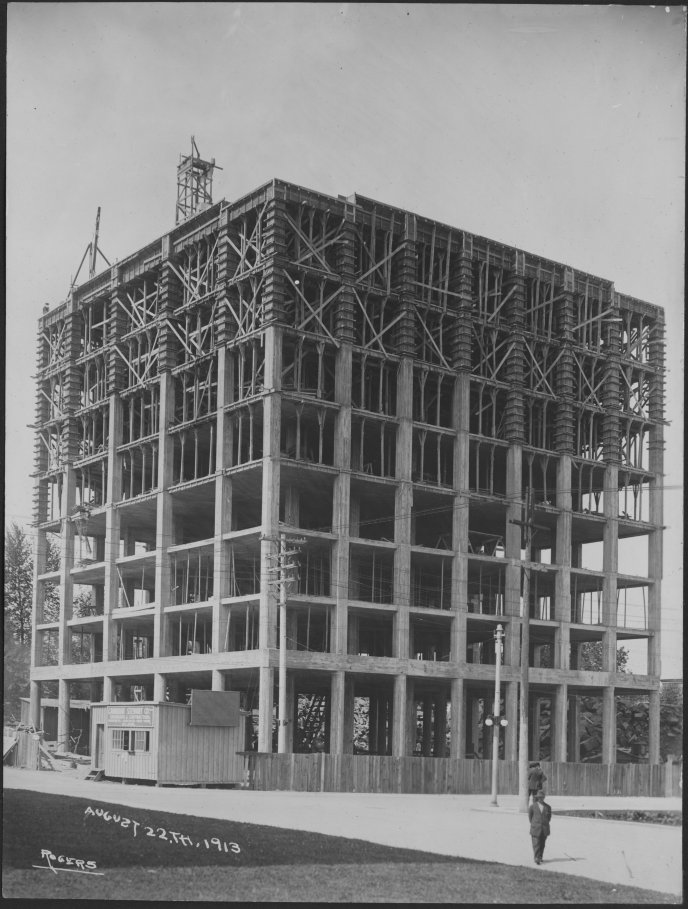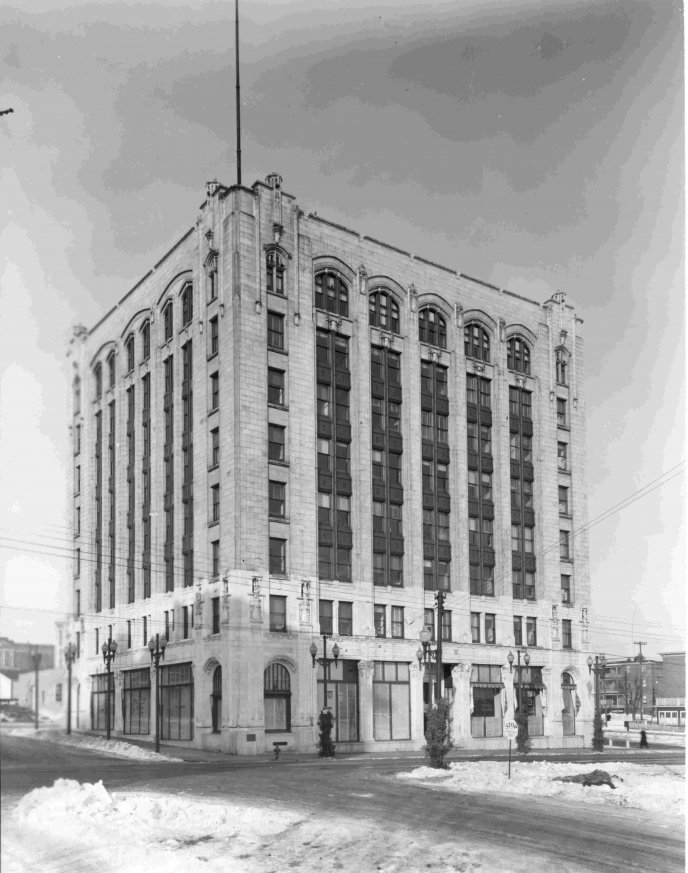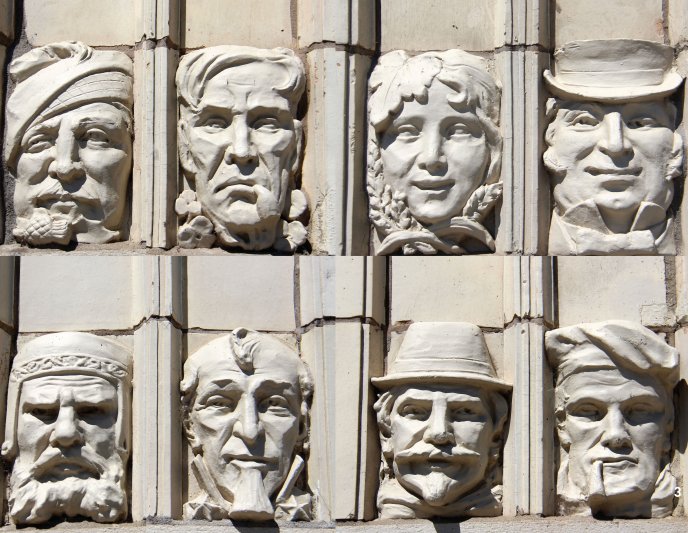Location: Thunder Bay, Ontario
Date of Completion: 1913
Architect: Brown and Vallance
Nominated by: Michael Gravelle, MPP (Thunder Bay – Superior North)
“We shape our buildings, and afterwards, our buildings shape us.” - Winston Churchill
Despite its fame as Thunder Bay’s “first skyscraper,” little is known about the design intentions behind the Whalen Building – its varied ornamentation lacking any official explanation. However, this has not stopped locals from weaving the sculptures into a story reflective of the region’s history and values.
The ‘Mammoth Skyscraper”
The “mammoth skyscraper” and “the finest building west of Toronto” – these were the headlines in 1913 as the Whalen Building, then the tallest building rising in Port Arthur (now Thunder Bay), was starting to take shape. Standing at eight storeys tall, it belongs to a period of extraordinary growth in the region based on improved access to markets and the development of the western wheat boom.
Archival photographs reveal what the building looked like during construction – a truly modern concrete marvel that is reminiscent of almost any tower under construction today. Concrete was the material of choice because it was readily available, unlike the steel that had to be shipped long distances and would have delayed the project.

The Whalen Building under construction.
Image Credit: James Whalen Collection. A0039. Lakehead University Archives.
All Dressed Up
While a contemporary concrete structure provides the building its skeleton, it is the white terracotta panels that bestow it its visual identity. In keeping with the popular style for high-rises at the time, the Whalen Building was clad in a neo gothic skin – the vertical lines accentuating the height of the building.

Image Credit: Thunder Bay Museum
At the time, Montreal-based Brown and Vallance was one of the most prolific architecture practices in the country – with 13 projects across Canada happening simultaneously as the construction of the Whalen Building. They were known for their use of eye-catching terracotta ornamentation, often choosing from their very own library of “typical ornaments” to weave unique stories for the buildings they designed.
In the case of the Whalen building, we know very little about the story behind its ornamentation. The architects were never paid for their work and, other than the plans documenting the building, they never visited the site or provided much of an explanation of its design.
What we do know is that there is little evidence that sculptures were specifically designed for the Whalen Building. Among the tell-tale signs is the fact that the Whalen Building’s ornamentation prominently includes pelicans – a rather rare theme and one that just so happened to be the corporate symbol of the Canada Life Assurance Company for which Brown and Vallance had designed buildings for in Calgary and Regina.
Other elements of its ornamentation, including provincial shields, the coat of arms of Scotland, England and Ireland, plant motifs and even the odd squirrel, are all found in different variations and applications across many of the buildings designed by this prolific firm. These choices seem to suggest a larger story about Canada as part of the British Empire – not an uncommon theme in many buildings at the time.

The People who settled Canada
Image Credit: cmh2315fl, Flickr https://www.flickr.com/people/21953562@N07/
There is one set of ornaments though that are completely unique to the Whalen Building – a series of eight heads that have been locally identified as “the people who settled Canada”. Each of these heads are unique, with a variety of expressions and headwear that have inspired locals to give each of them a name and personality – despite there being no records of the architects’ intention. The eight heads are now known as: Uncle Sam, the Scandinavian, the Dutchman, the Voyageur, the Englishman, the Scot, the Irishman and Eve –together, they are said to represent the diverse origins of this northern Ontario community.
This post forms part of our World Architecture Day Queen’s Park Picks 2018 series in which we asked Ontario’s Members of Provincial Parliament to nominate a prominent building, past or present, in their riding for a chance to learn more about it. Check out the rest of the series to learn more about great buildings across the province!
The OAA would like to thank the Thunder Bay Museum and the Lakehead University Archives for the information, images and drawings that made this blOAAg post possible.
Additional Sources
Vervoort, Patricia. “Thunder Bay’s First High-Rise and its Terra-Cotta Symbolism” in the
Society for the Study of Architecture in Canada Bulletin, Volume 14, Issue 3, p.75-83, 1989. Accessed electronically
https://dalspace.library.dal.ca/handle/10222/71516 “First Skyscraper,” The Daily News, Port Arthur, 21 January 1914.